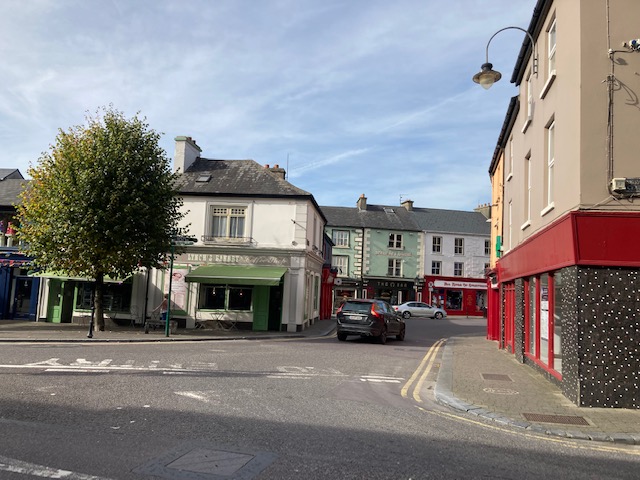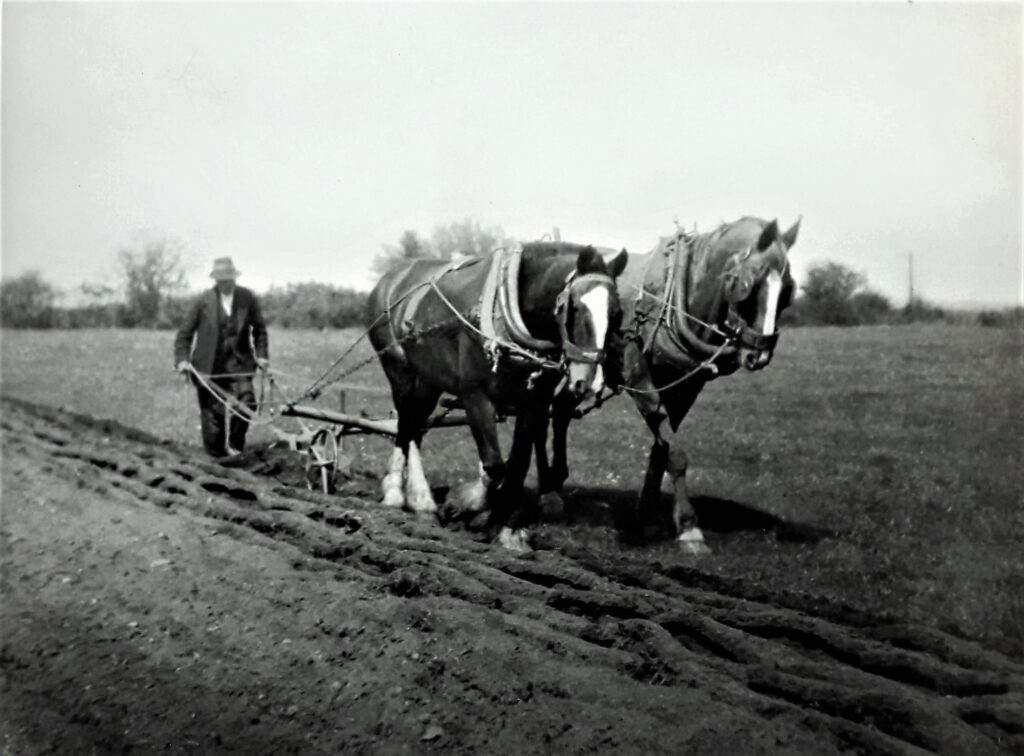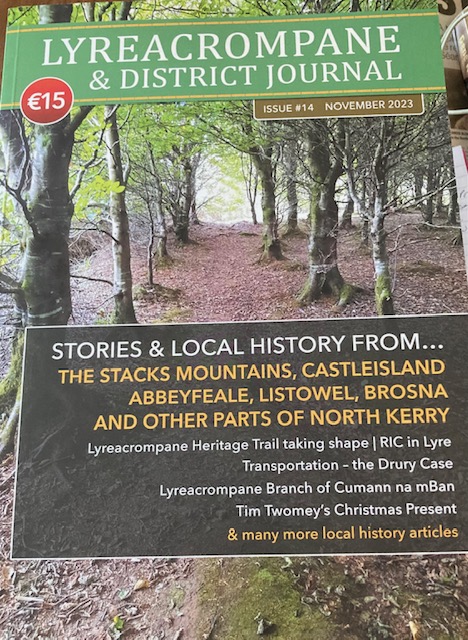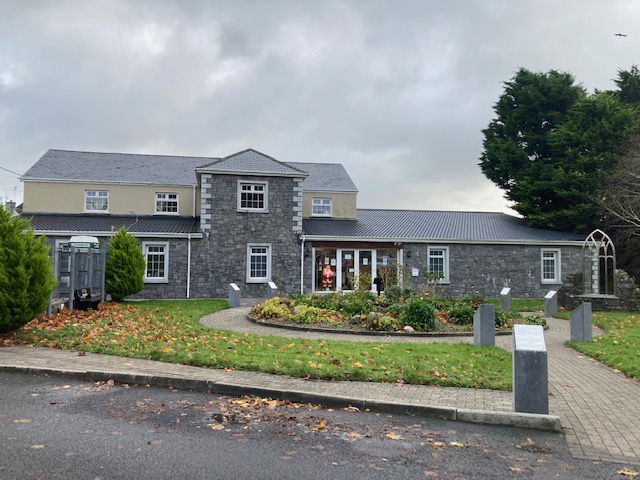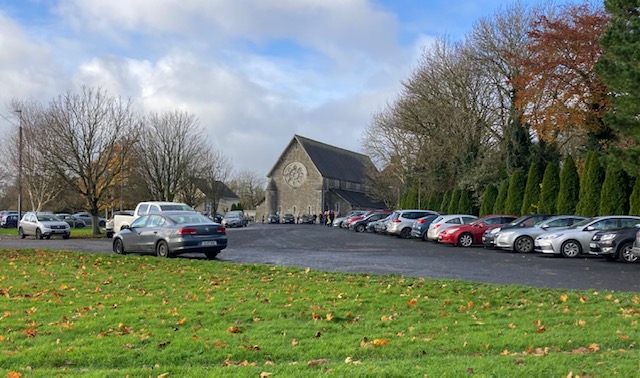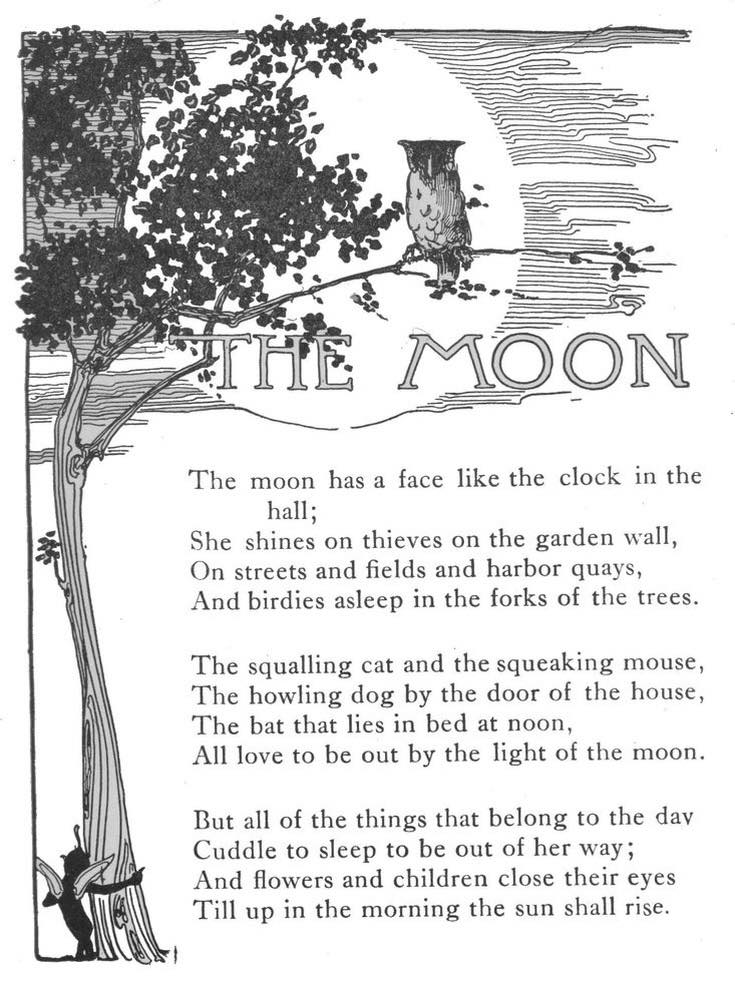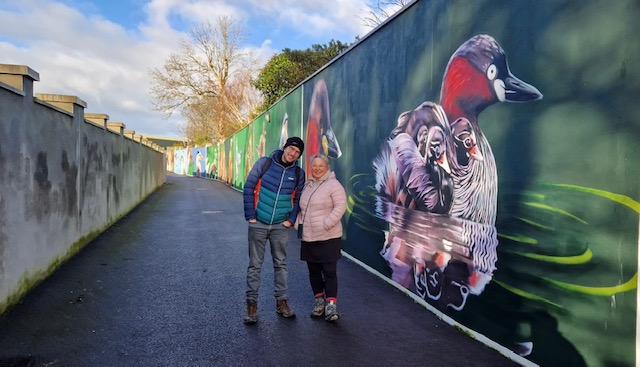
Simon and Carine on the Flesk Cycleway, Killarney, January 6 2024
<<<<<<<<<<<
Greetings to January 2024
New Year 2024
New year 2024 has dawned.
We’ve had January 1,2, 3,4
Relentless rain has fallen
Lashing on the windowpanes.
Streaming down the roof tiles
Gurgling down the drainpipes
Gurgling up the gully traps
Choking drains already blocked
Water gurgling up through manholes.
The lawn too has a well-watered look
With ponds appearing at every nook
Patio paving flags are well washed down.
Roads are flooding, edges muddying.
Dangerous conditions for driving
Weather forecasts are dreary.
Weak troughs, low depressions
Announcing rain followed by downpours
Falling in thunderous volumes
Yellow and orange weather warnings announced
Alerting us to more windy days ahead
This is now the Irish weather norm
With the odd tornado thrown in as well
Leitrim roofs and buildings damaged.
Trees are falling nationwide.
Fields are flooding far and wide.
Sporting pitches water logging
Clouds are darkening, the sky is weeping.
All is drabness.
With sickly dreary darkness
Kids are tetchy, bored, and gloomy.
Confined to houses, some not too roomy.
Too much screen time
No outdoor healthy playtime
With boredom thresholds
And patience levels lowering.
Too many treats on offer
From stressed out weary parents.
Trying to bribe them with sweetie presents
We hope for fine weather soon.
To clear the winter gloom and doom.
Happy new year Mary
Mick O Callaghan January 2024
<<<<<<<<<<
The Dream Lives On
Maeve Binchy believed that everyone should have something to look forward to. She always had an airline ticket in her desk.
Listowel Emmetts have booked us all a ticket to Croke Park.
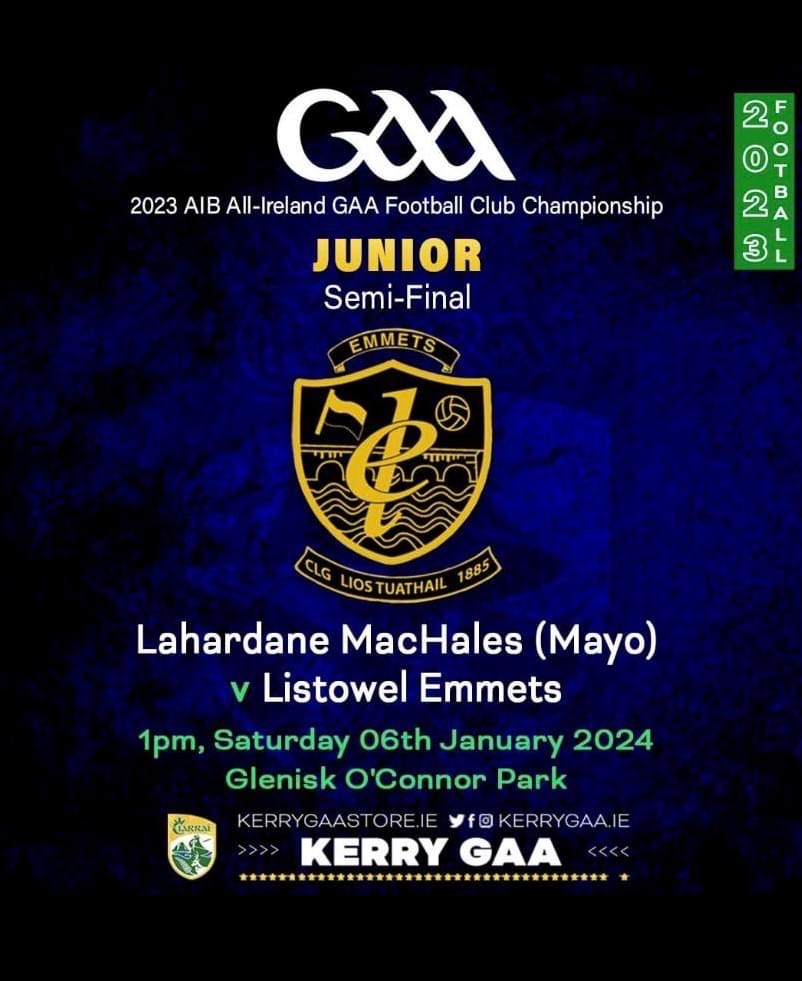
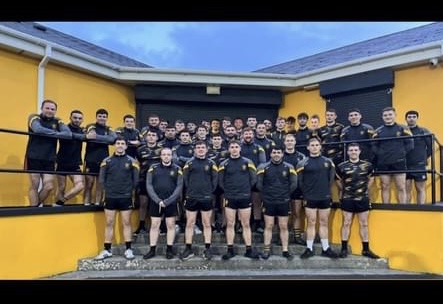
Result; Emmetts 1-11 Laherdane 0-3
<<<<<<<<<<<<
The Night of the Big Wind
(This account and image comes from a Facebook page, Ireland and Peg’s Cottage.)
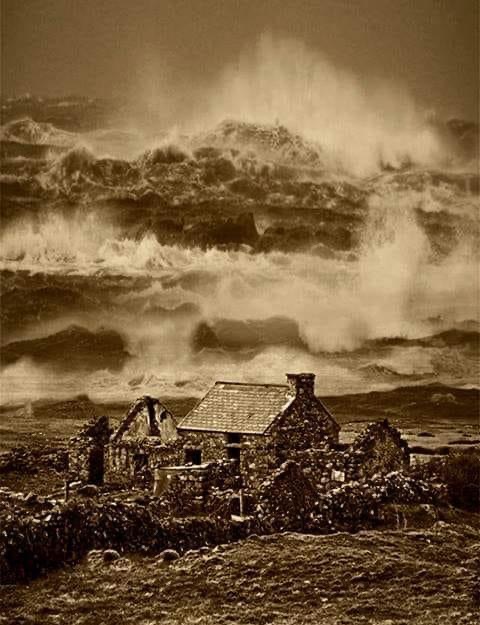
Storm at Fanad…photographer name not recorded
It happened on a Saturday. It was January 6th, 1839, and heavy snow had fallen overnight. All over Ireland people awoke to a strange calm. As the morning went on the temperature rose until it was well above the average for the time of year. While children played in the quickly melting snow, mothers and fathers were inside their homes preparing for the festivities of Little Christmas, the feast of the Epiphany. By mid-afternoon it had become so unnaturally calm that voices floated between farmhouses more than a mile apart. Something was going on, but no one knew what.
A deep depression was forming in the north Atlantic. As the warm front moved eastwards and rose in the atmosphere, it was replaced by a cold front which brought high winds and heavy rain.
The rain began before noon. It started in the west and spread slowly eastwards. By late evening wind speeds had increased and temperatures had plummeted. By 9 pm the wind had reached gale force and still it carried on increasing. By midnight it had reached hurricane force and it stayed at that level until 5 am the next morning. All along the west coast people made their peace with God, convinced the end of the world had come. There was a terrifying rumbling noise throughout the storm and it got louder as the gusts increased. The wind blew out lanterns and candles and it was impossible to see what was happening outside, except when streaks of lightning occasionally illuminated an area or when the sky cleared briefly and the Aurora Borealis could be seen lighting up the northern sky with a mantle of red.
On Monday morning the sun rose over a wasteland. Familiar objects were unrecognisable. Landmarks had gone and nothing was where it should be. The people were dazed and exhausted from lack of sleep.
As well as homes, historic buildings had either been destroyed or badly damaged, never to be restored. Tombstones were flattened, dry stone walls were toppled and roadways were rendered impassable. Sea water had been carried inland by the force of the storm and flooded houses there. Seaweed had been carried for great distances and fish were found miles from shore. One of the most abiding memories of the night and its aftermath was the smell of salt. It lingered for weeks.
Given the storm’s ferocity the death toll was miraculously low. Perhaps 250-300 people lost their lives, most of them at sea in the disastrous wrecks. RIP.
<<<<<<<<<
My First Fact of 2024
The Wat Pa Maha Chedi Temple in Thailand is also known as TheTemple of the Million Bottles. It is constructed using Heineken and Chang beer bottles.It is a kind of Buddhist reuse recycle project.
Collection of the bottles began in 1984. The temple took 2 years to build. The monks had collected so many bottles that they added extra wings to the original plan.
<<<<<<<<<<























